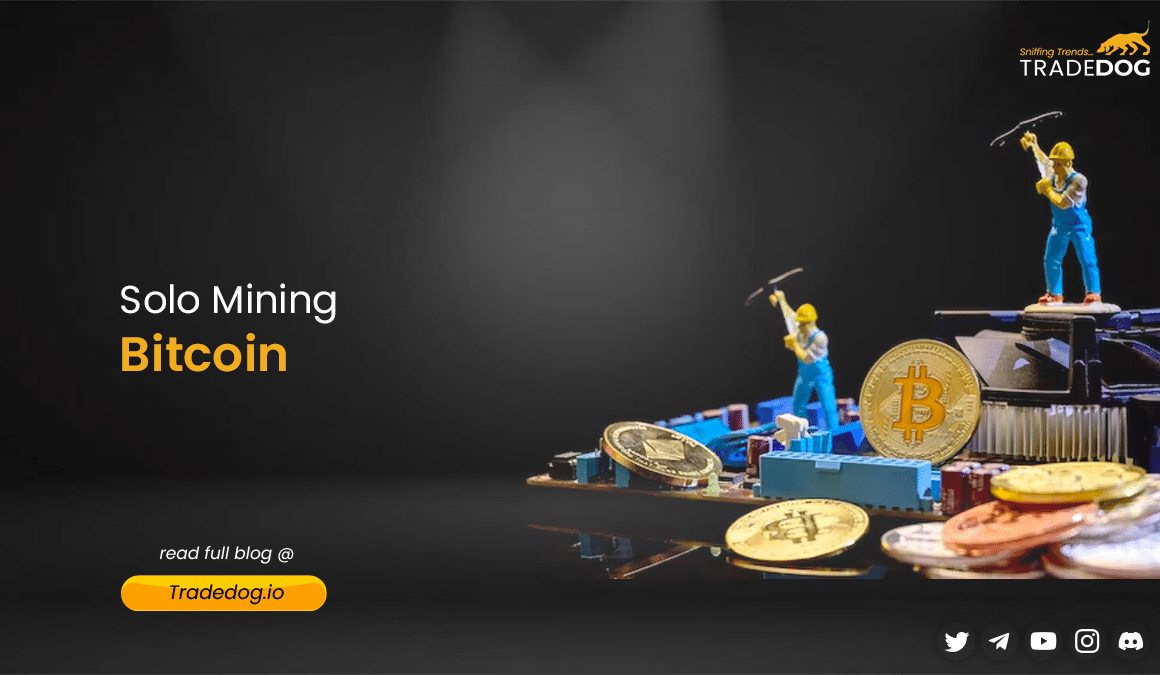Bitcoin mining is a fundamental aspect of the Bitcoin network, ensuring security, transaction processing, and the creation of new bitcoins. Solo mining, one of the earliest forms of Bitcoin mining, involves an individual miner independently working to find new blocks and receive the entire block reward.
What is Solo Mining?
Solo mining refers to the process where an individual miner uses their computing power to mine for Bitcoin blocks without joining a mining pool. In the early days of Bitcoin, solo mining was more common due to the lower difficulty level of the network.
- Hardware Setup: Solo miners require significant computing power, typically through specialized hardware like ASIC (Application-Specific Integrated Circuit) miners.
- Bitcoin Node: Miners run a full Bitcoin node, which is a program that fully validates transactions and blocks across the Bitcoin network.
- Mining Software: They also use mining software that connects their hardware to the Bitcoin network, enabling them to attempt to solve cryptographic puzzles.
- Solving Blocks: The miner’s hardware tries to solve a complex mathematical problem that verifies a block of transactions. This process requires immense computational power and electricity.
- Block Reward: If a miner successfully solves a block, they receive the block reward, which as of 2023 is 6.25 bitcoins, plus the transaction fees from the transactions included in that block.
Advantages of Solo Mining
- Full Reward: The most significant advantage is receiving the entire block reward, unlike in pool mining where rewards are distributed among participants.
- Control and Autonomy: Solo miners have full control over their mining operations, including which transactions to include in the blocks they mine.
Disadvantages of Solo Mining
- High Resource Requirement: It requires considerable investment in powerful hardware and incurs high electricity costs.
- Variance in Rewards: The likelihood of successfully mining a block as a solo miner is significantly lower compared to pool mining, leading to high reward variance.
- Technical Knowledge: It demands a higher level of technical expertise to set up and maintain the mining operation.
The Current State of Solo Mining
As Bitcoin has grown, the difficulty of mining has increased exponentially. This makes solo mining less feasible for average individuals due to the sheer computational power needed to compete with large mining operations and pools. The chances of successfully mining a block on one’s own are now extremely low, making solo mining more of a high-risk venture.
Conclusion
Solo mining Bitcoin is a process that allows miners to independently mine and receive full rewards for their efforts. However, with the increasing difficulty of the Bitcoin network and the high resource requirements, solo mining has become less common, especially for individuals with limited resources. While it offers autonomy and control, the high variance in rewards and technical complexities make it a challenging endeavor. As the Bitcoin network evolves, the role and feasibility of solo mining continue to change, reflecting the dynamic nature of the cryptocurrency landscape.









